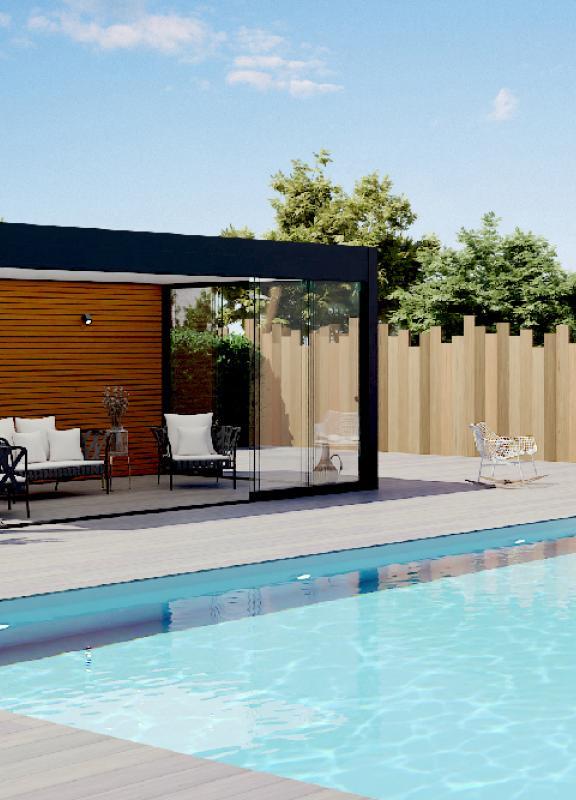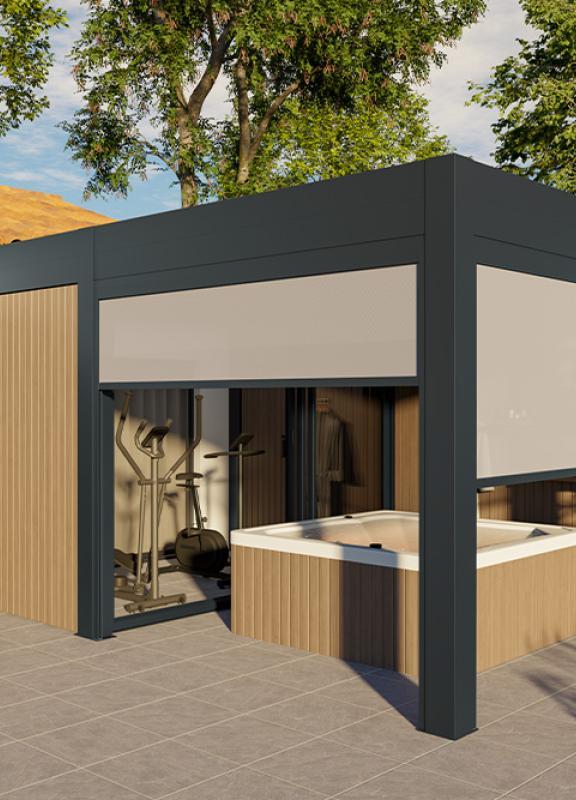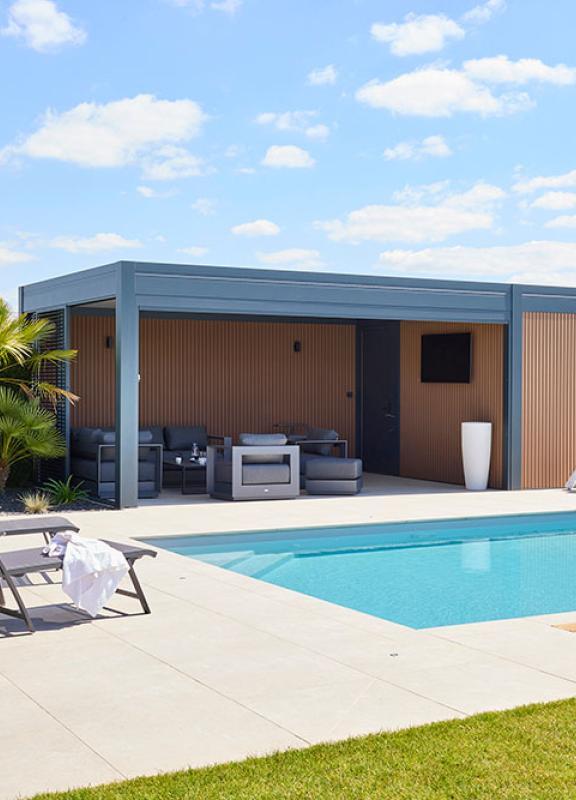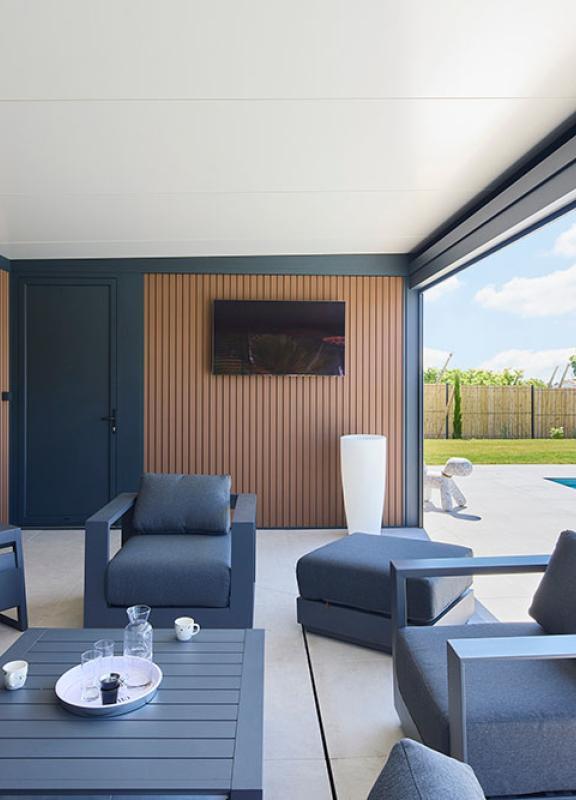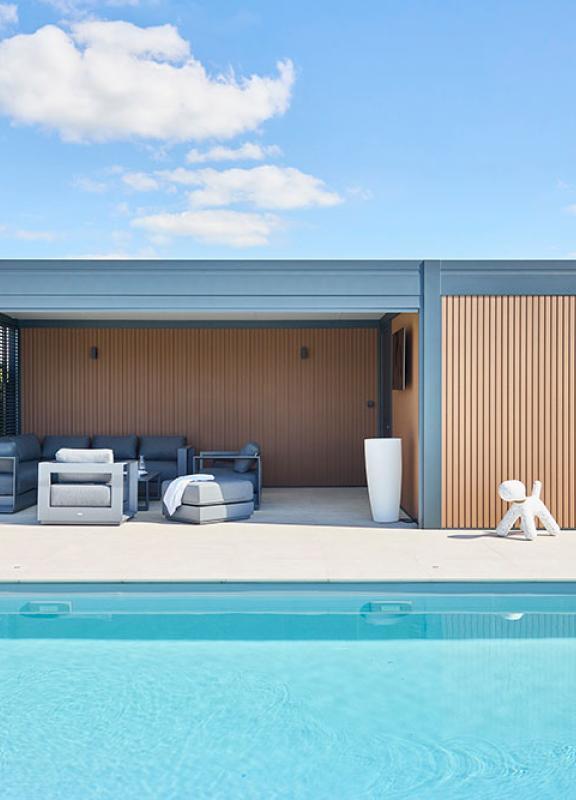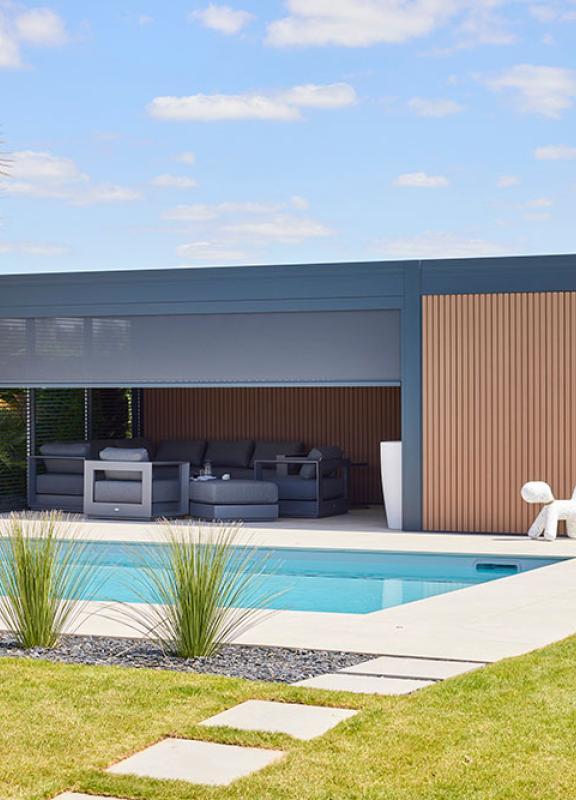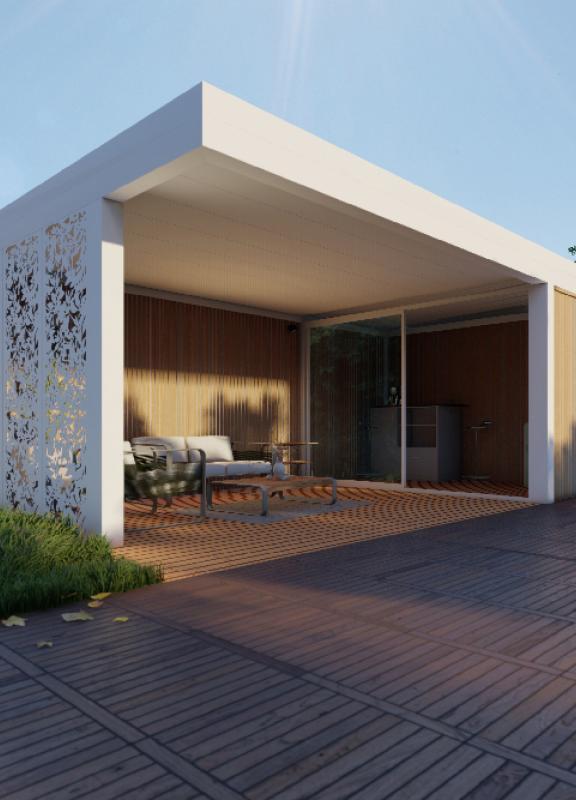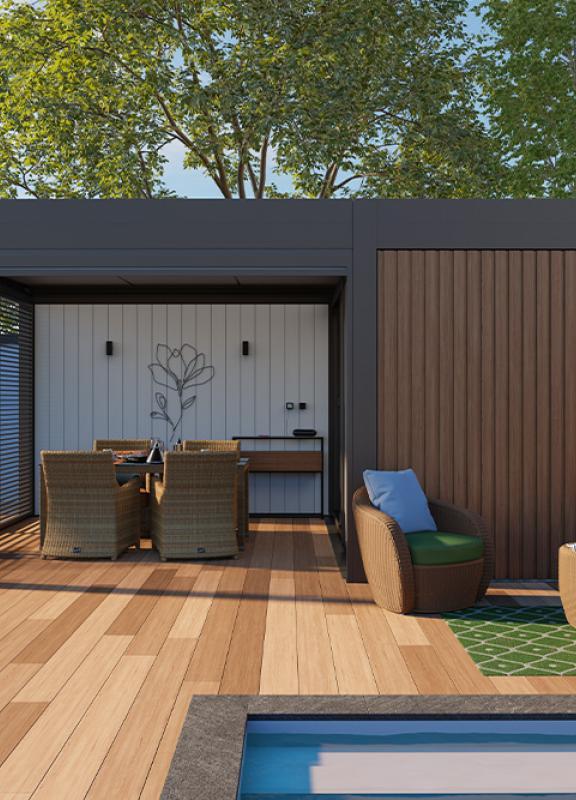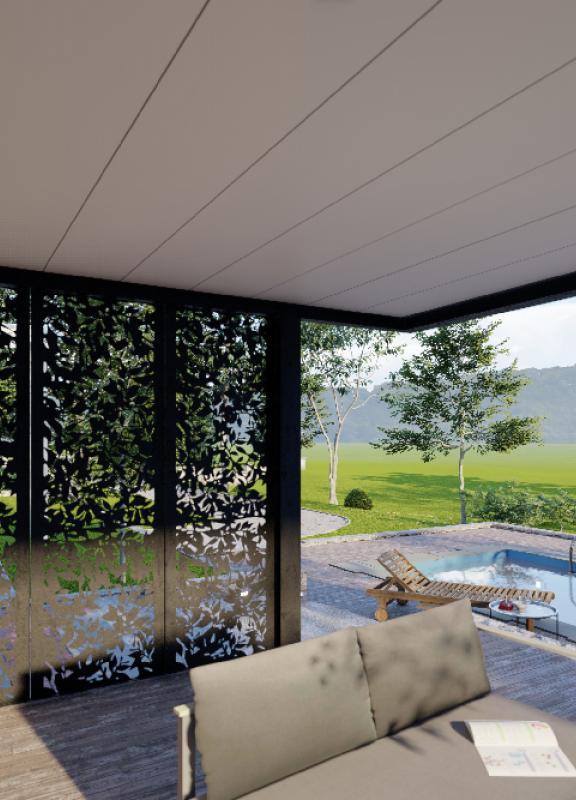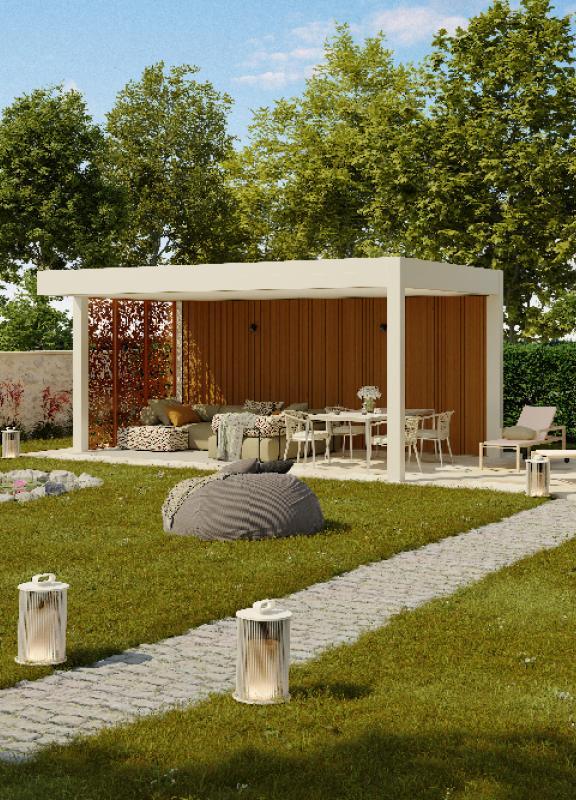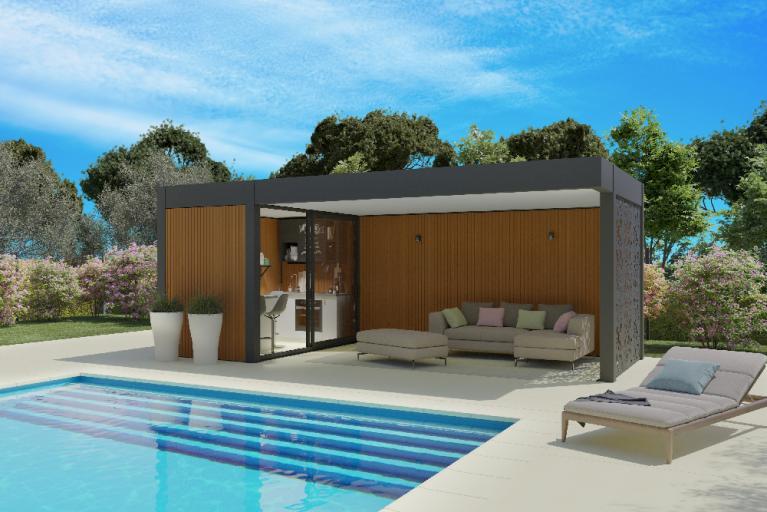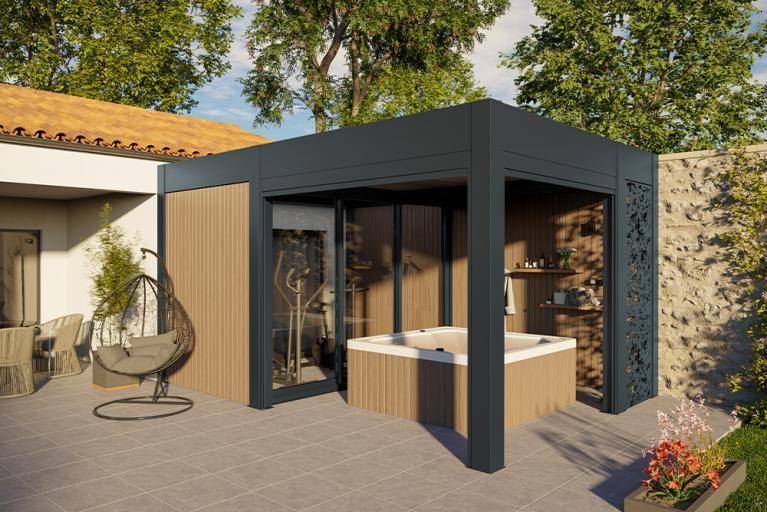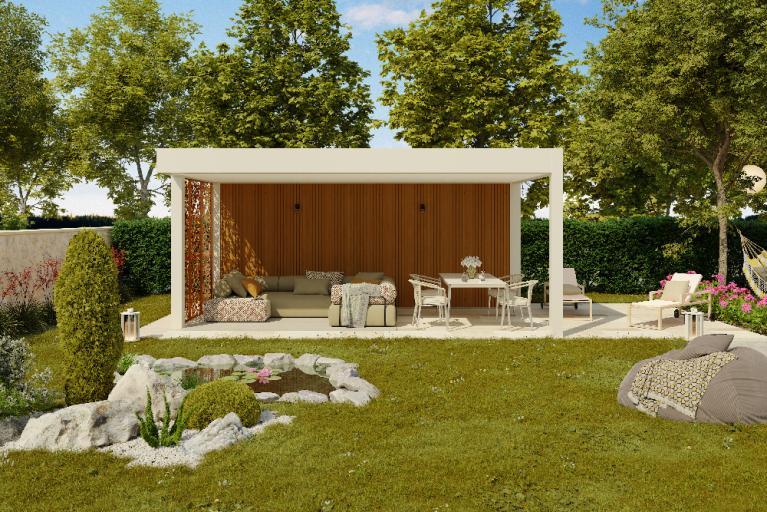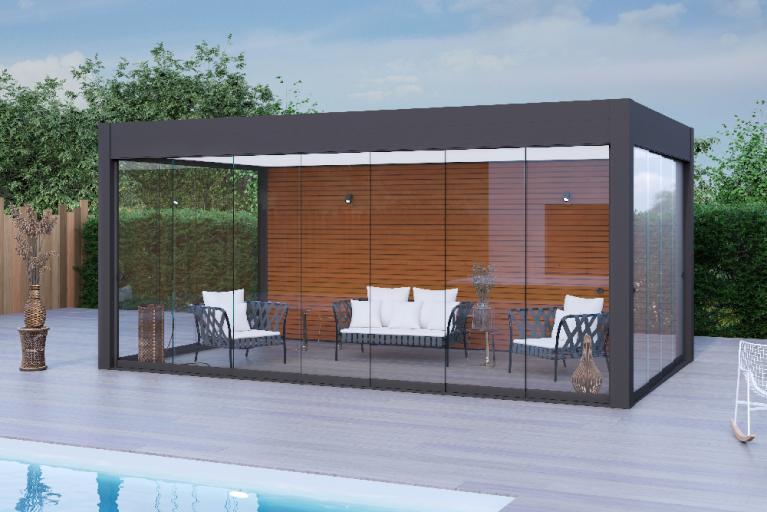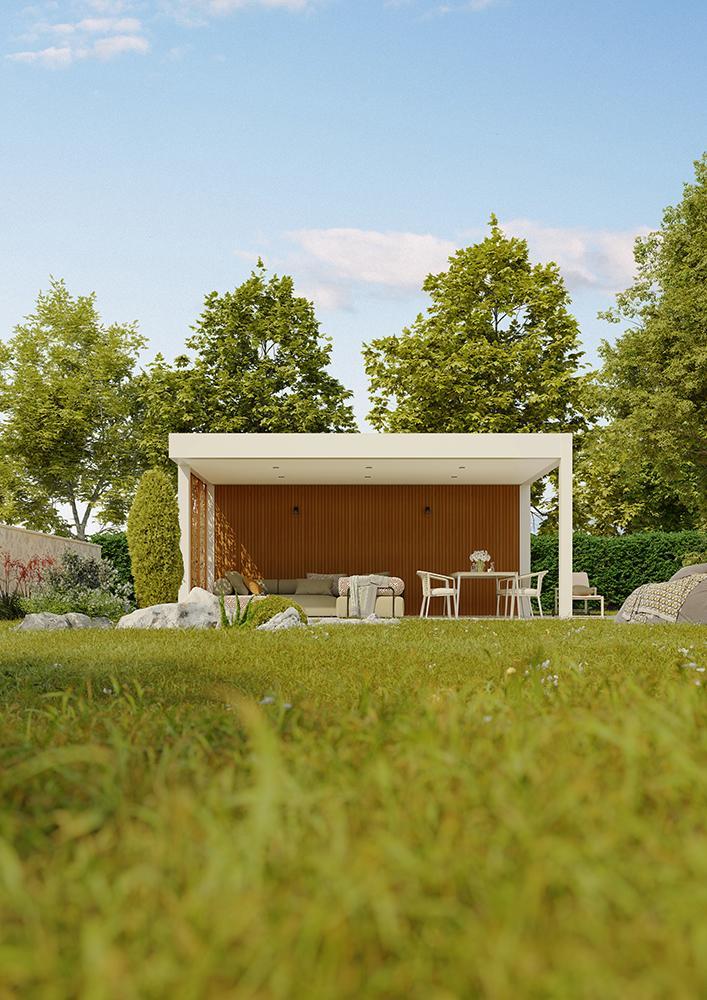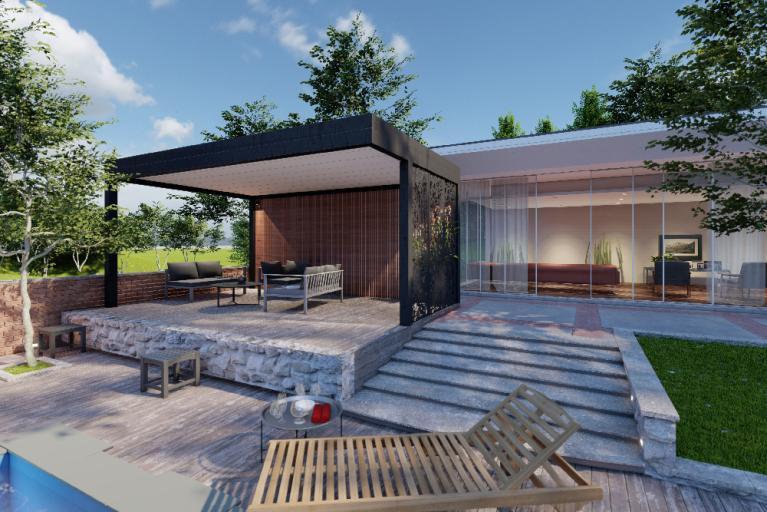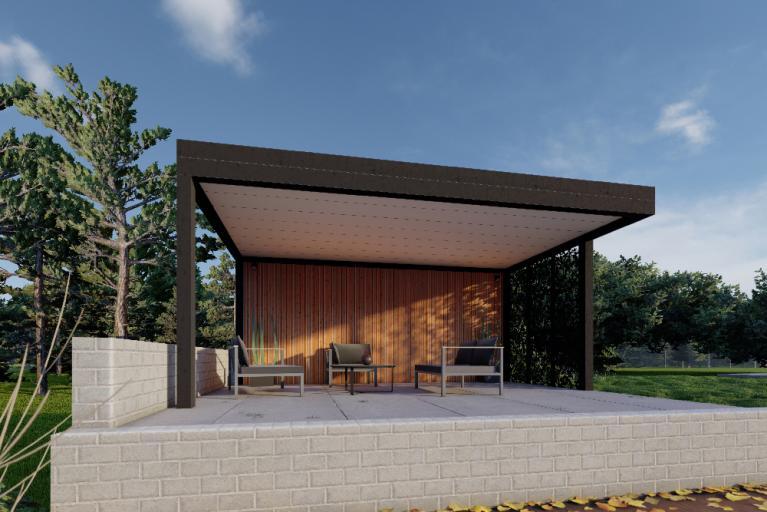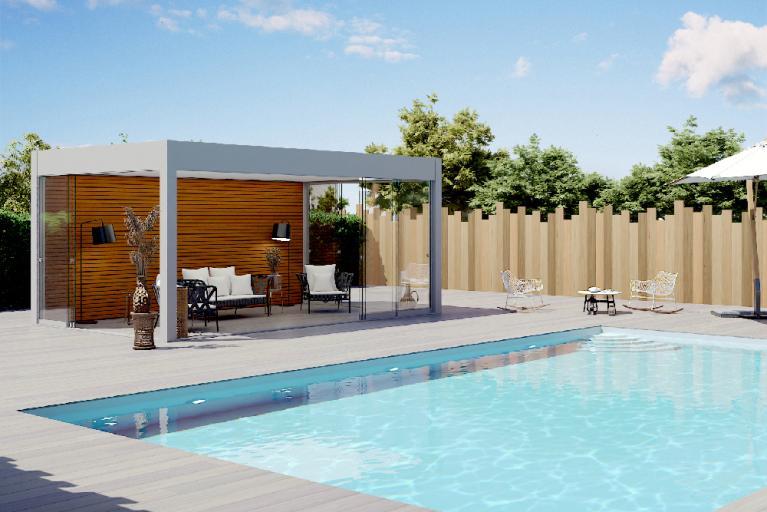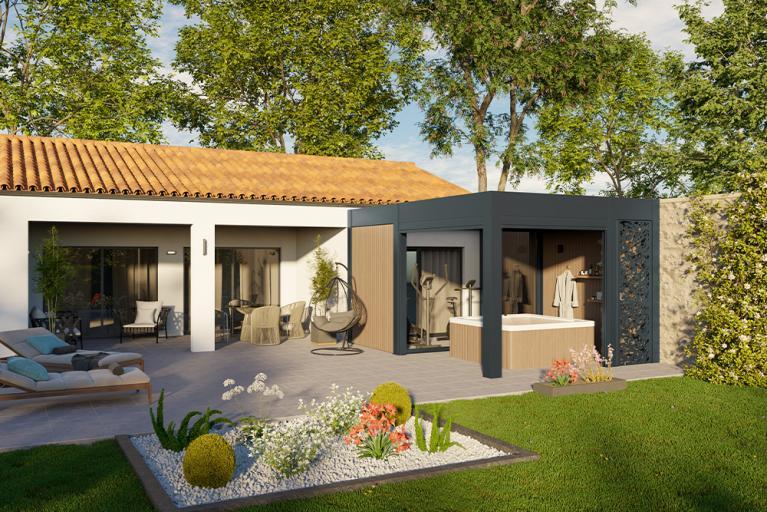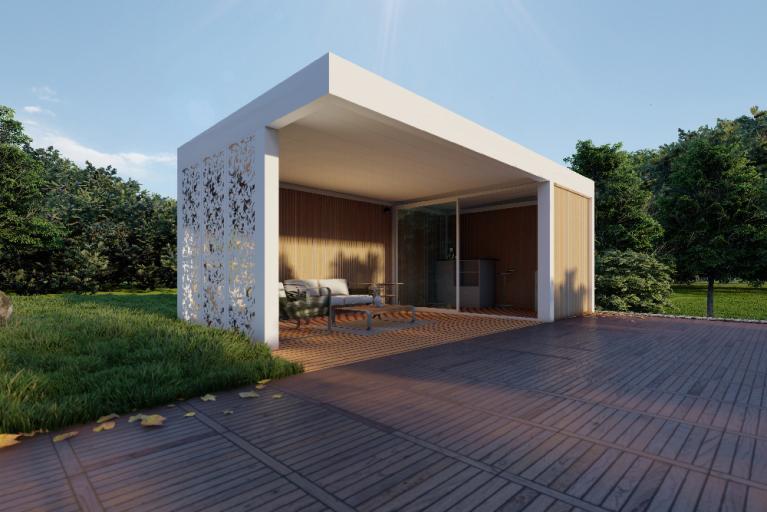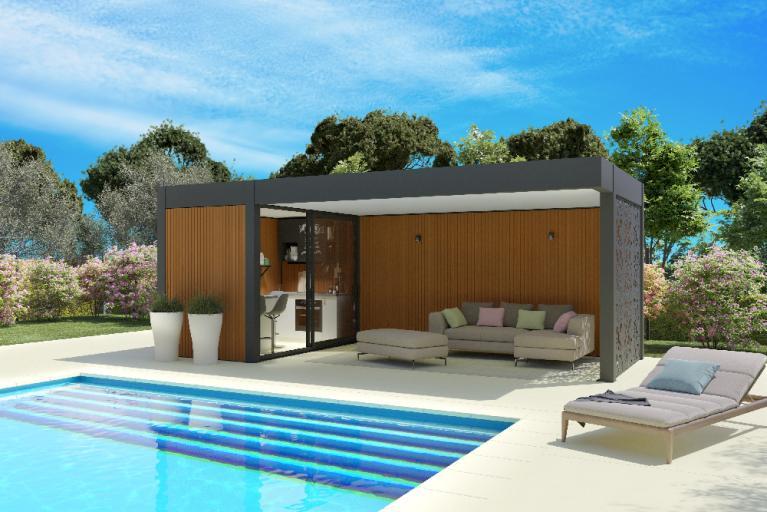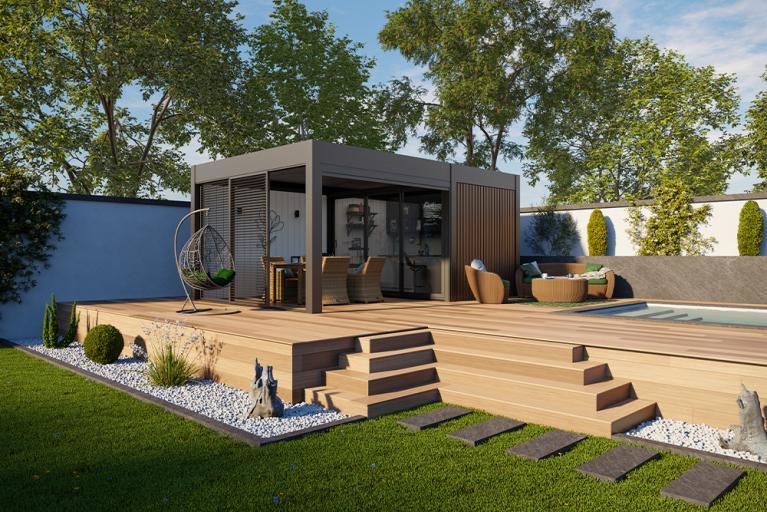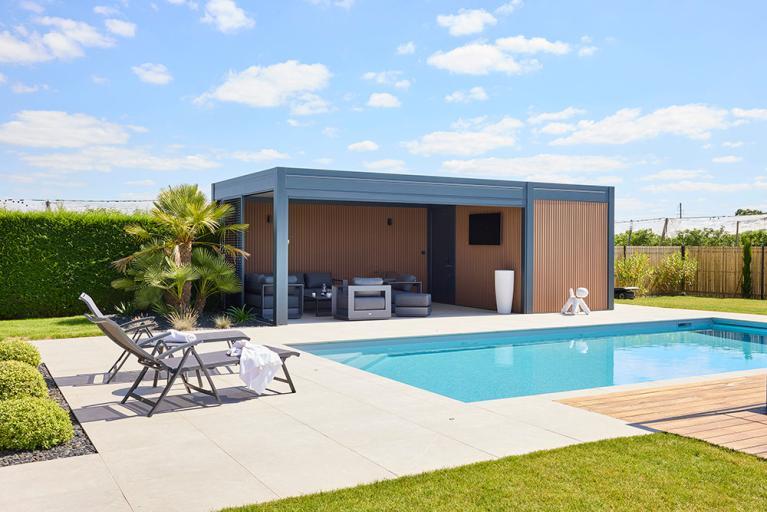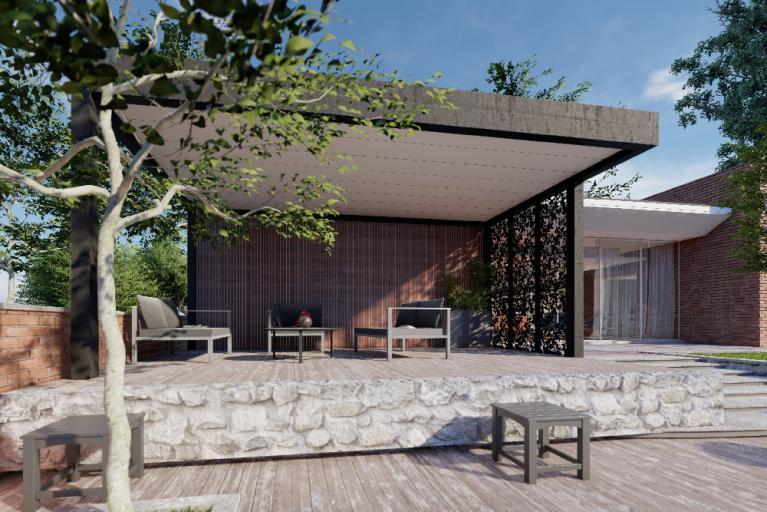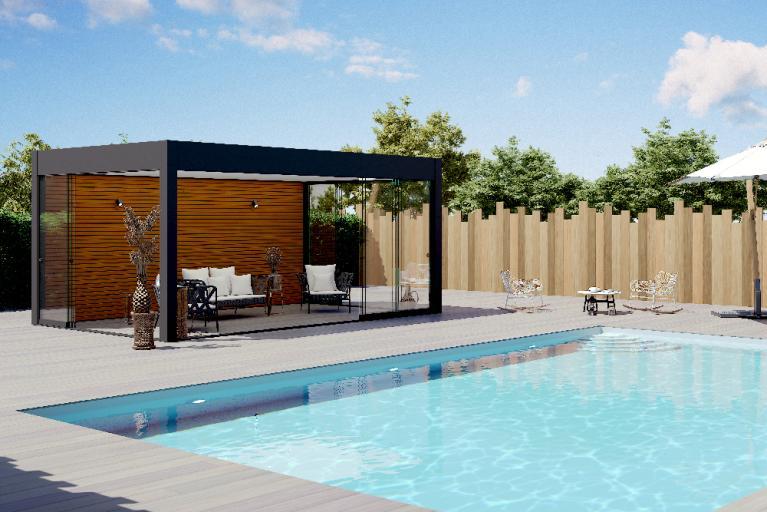The pool house, an all-in-one space for pool and garden
Installed close to the pool, the pool house is an outdoor aluminium enclosure with a wide range of uses. Originally a simple technical room, it has now become a real place for relaxation and leisure. And to meet every need and aesthetic preference, it comes in a wide range of models, materials and finishes.
- So what can a pool house be used for?
- Do you have to comply with certain standards and stages before installing this type of shelter?
- And how can you be sure you're choosing the most suitable pool house?
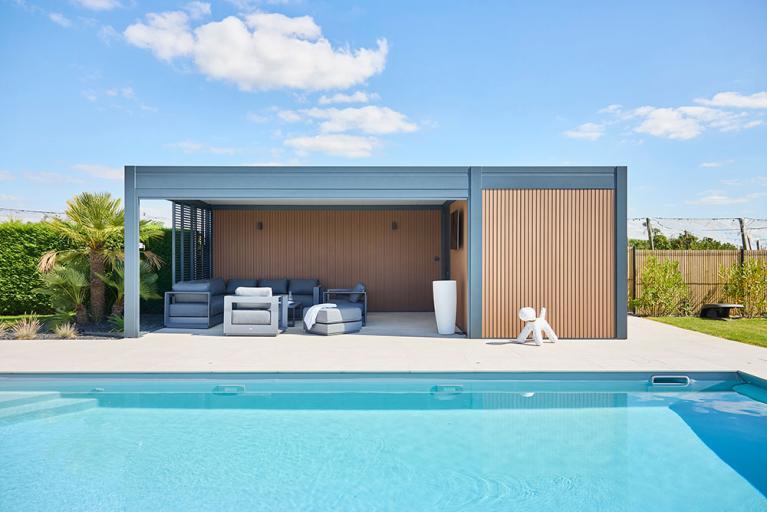
Colour & style
Colours :
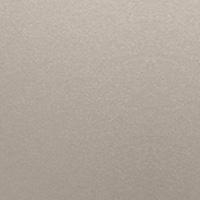
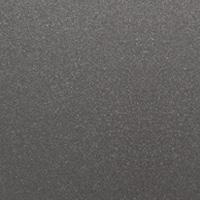




Customisation :
The wooden wall partition is completely customisable. You can choose between different colours, materials, shapes...
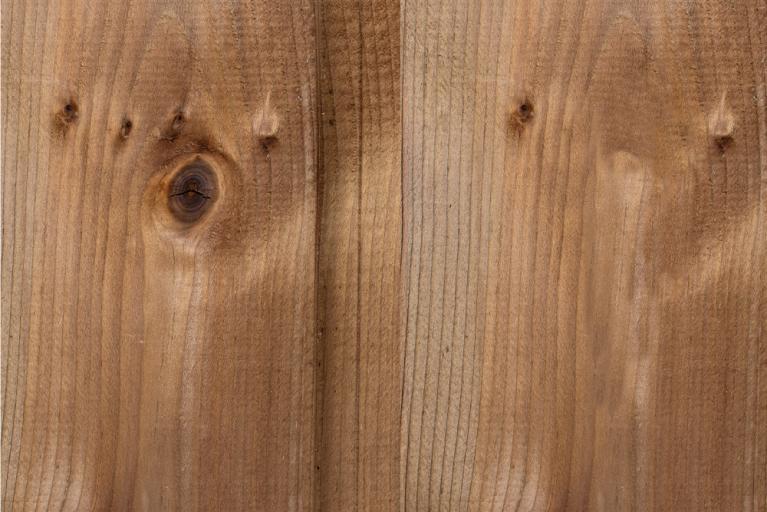
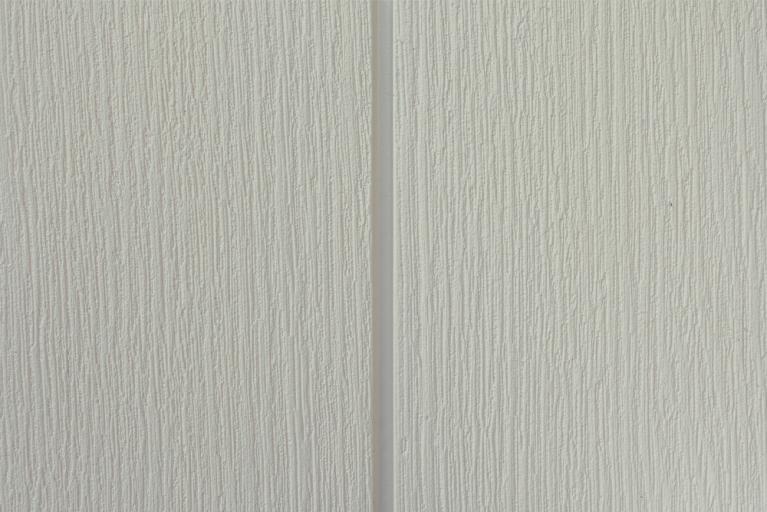
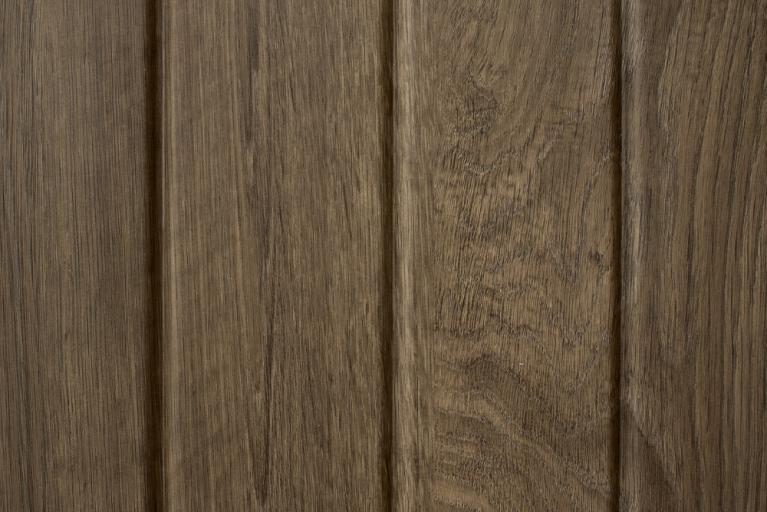
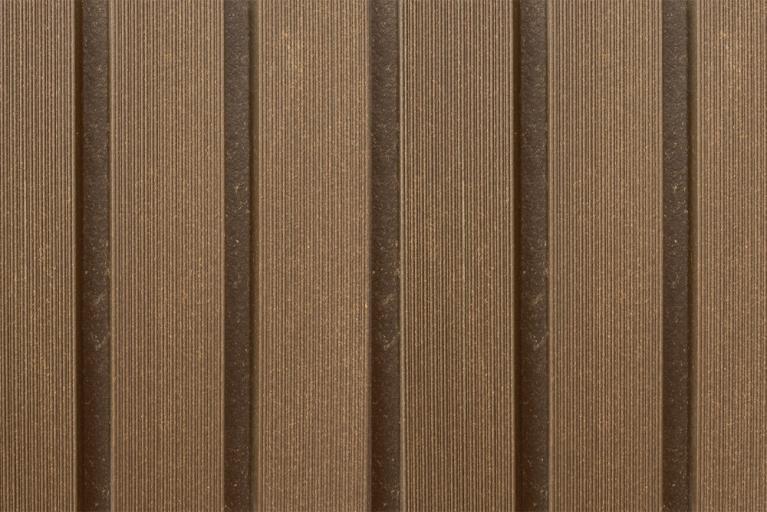
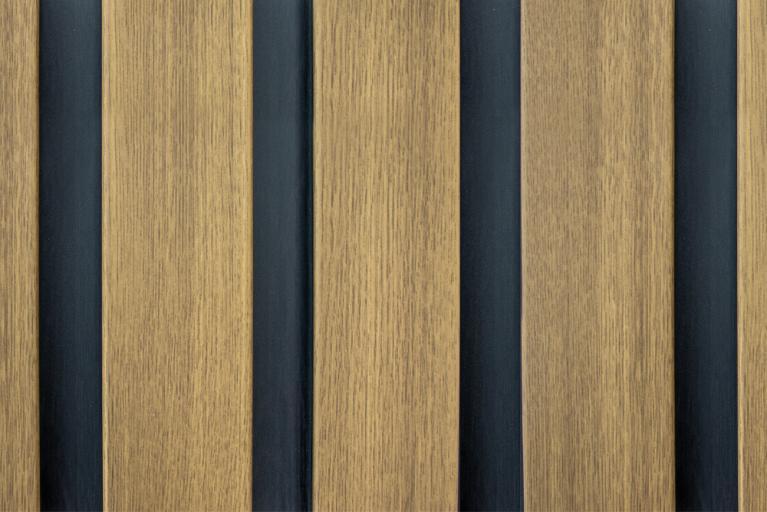
Roof performance
- Self-supporting White/White sandwich panel, 63 mm thick,
- Panel assembly with joint keys,
- Panel centre distance 1200 mm,
- Roof pitch in the direction of the smallest dimension, with a slope of 2 to 5% depending on depth.
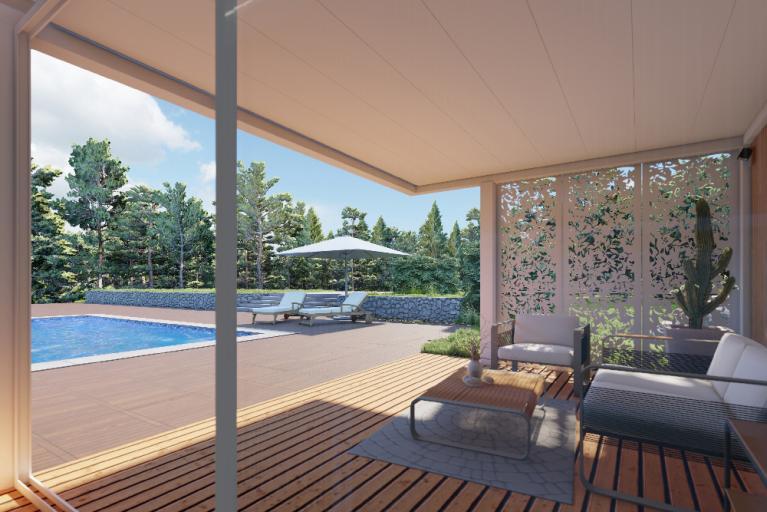
Equipments
Side guards, privacy screens, blinds, sliding glass, lighting... our design office has studied a number of options to add style and comfort to your pool house.
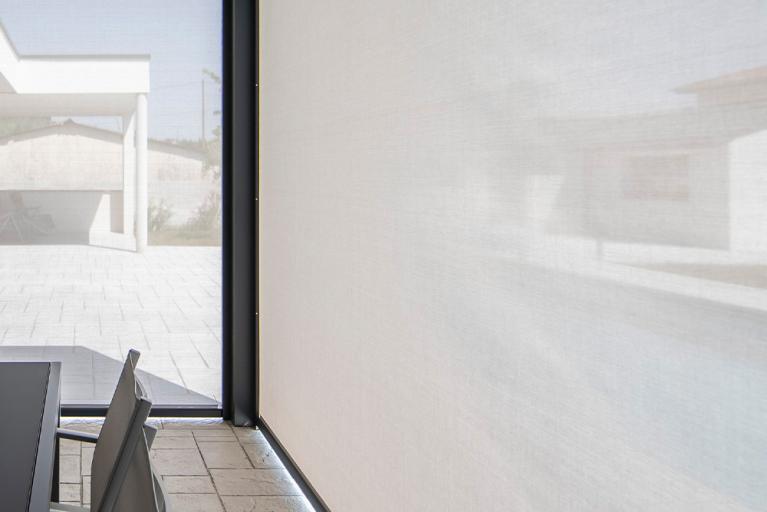
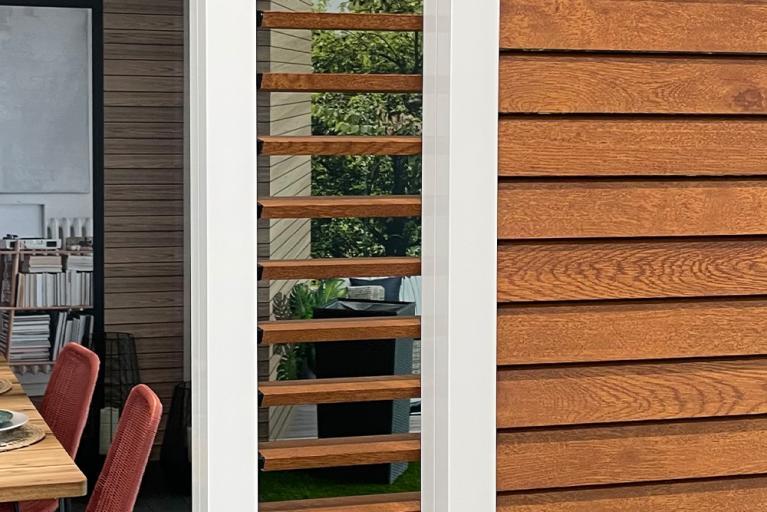
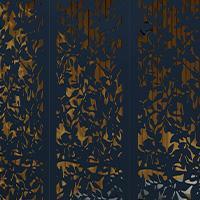
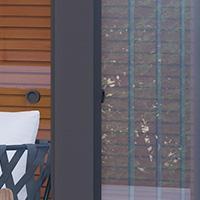

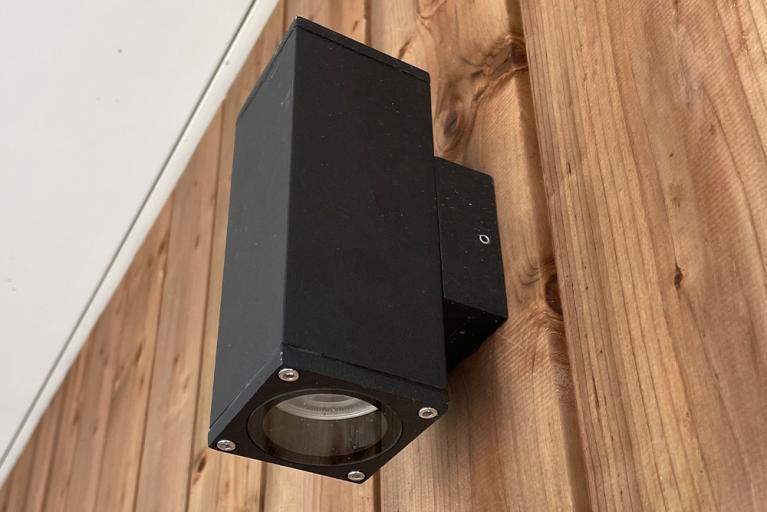
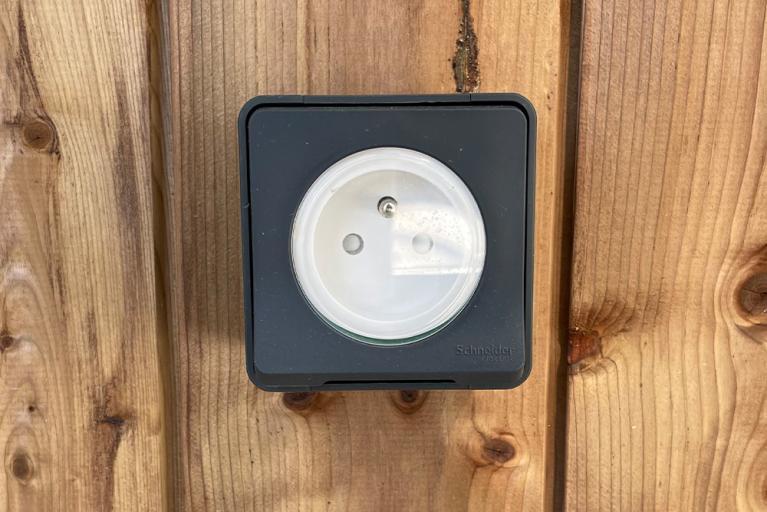
A shed opening onto the garden, near the swimming pool
The pool house is a relaxation area or outdoor shelter for the pool, usually opening onto the garden. Installing machinery and storing swimming accessories, storing outdoor furniture, fitting out a summer kitchen or a real living room... Between a technical room and a relaxation area, this multi-purpose shelter offers many advantages.
The poolhouse: a multi-purpose space for storage and relaxation
First and foremost, the pool house is the ideal place to install all the pool's equipment and technical components (the pump and filter, the network inlet and the hydraulic circuit valves, the heat pump equipment, the salt chlorinator, the protective cover, the robot and the maintenance products, etc.). Covered and enclosed, this technical room protects the equipment from the elements and bad weather, guaranteeing its durability and smooth operation over the long term.
Right next to the pool, this practical shelter can also be used to store all your pool games and accessories after swimming (pool covers, goggles and flippers, buoys and inflatable mattresses, boards and ‘chips’...). And if the pool house is big enough, it can be transformed into a real garden shed: it's then used to store all your outdoor equipment at the end of the summer (deckchairs, sun loungers, outdoor tables and chairs, parasols, barbecue or plancha...). This is also sometimes referred to as a ‘garden room’.
As well as offering practical, easy-to-access storage space, the pool house can also be transformed into a real additional living space, thanks to its made-to-measure dimensions. Available in a wide range of models, shapes and materials, the pool house can be extended by a terrace or awning, making it extremely versatile. For example, you can install a small shower cubicle to change clothes and rinse off after a swim, an outdoor bar or kitchen to make the most of the outdoors and the fine weather, or a summer lounge to relax and unwind at the end of the day... For maximum relaxation and well-being, some people even choose to incorporate a sauna or spa into their garden chalet!
A new outdoor space that's modern, practical and user-friendly
Installing a pool house next to your swimming pool or in your garden offers a number of advantages. Quick and easy to build, this garden chalet can become a real extension of the house in the summer months. Enjoy lunch with your family by the pool, organise a barbecue and pool party with friends, relax with a good book after a swim, take a sauna or soak in a whirlpool bath... It creates an extra living space that opens onto the garden, and lets you enjoy the outdoors even more. Real added value for your home!
Classic or contemporary, rustic, designer, modern or Mediterranean... Available today in a wide range of styles and models, the pool enclosure can easily be adapted to suit any house or garden. Its aesthetic lines and meticulous finishes will enhance your terrace or poolside area. And choosing a pool house with an integrated awning also provides effective protection from the sun: an ideal solution if you don't want to clutter up the terrace with parasols or other shading solutions.
But it's when you use it that you realise its advantages. As mentioned above, the pool house is much more than just a swimming pool room... With the right layout and a well-appointed interior, it can easily be transformed into an all-in-one space, without sacrificing the aesthetic appeal of the garden. Perfect for storage and keeping things tidy, it now benefits from modern equipment that means it can be used as a complete summer kitchen or a real relaxation area by the water.
The pool enclosure can also be fitted with sanitary facilities, good lighting and a high-performance sound system, making it the ideal place to organise parties without having to enter the house!
Your car also deserves its own space. By choosing to combinea garage and a pool house, you get a practical and elegant shelter for your vehicles. With its solid structure and attractive design, this solution offers the same alternative to conventional garages as a carport.
How does Akena support you and assess your budget?
The cost of your project depends on a number of parameters: materials, equipment, accessories and your comfort requirements.
Our achievements
Installing a pool house at home: steps to follow
A small utility room or a large storage shed? A simple poolside shelter, a multi-purpose space or a real garden house? Identifying your needs is the first step in determining the size and interior layout of your future pool house. It is then essential to follow certain steps to ensure the successful installation of your pool house.
-
What size for a pool house?
-
The size of the pool house necessarily depends on the budget available for the project. But the use of the shelter must also be taken into account. Are you sure you want to build in a summer kitchen or a large covered relaxation area? Waiting until you have the necessary budget means you don't have to do the work in two stages, an alternative that often proves more expensive...
To choose the right surface area and dimensions, all you have to do is think about the future use of the pool enclosure:
- less than 5 m2: this is known as a technical room. This small area can only accommodate the equipment needed to operate the pool, and a few swimming accessories (with shelves installed high up, for example);
- between 5 and 10 m2 : well laid out and organised, the enclosure can also be used to store buoys and pool toys, and sometimes even one or two deckchairs. Some well thought-out wall fittings can also increase storage space;
- between 10 and 20 m2: this pleasant space can accommodate all the pool's technical equipment, as well as an outdoor bar, a summer kitchen or a large area for relaxing and lounging;
- over 20 m2: it becomes a true extension of the house. It can accommodate all types of space and all types of layout.
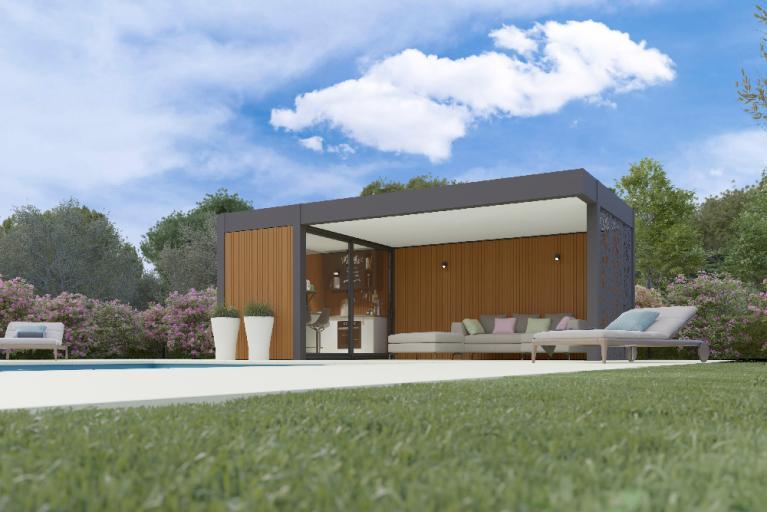
Although it is generally installed as close as possible to the pool, the location of the pool house also needs to be determined precisely. This allows you to budget for the earthworks and masonry work required (such as the creation of a concrete slab, for example). If it is to house the pool's technical equipment, its location needs to be carefully considered. Sunlight and prevailing winds must also be taken into account: its orientation must allow it to provide shade near the pool, sheltered from the wind. Finally, the pool house must be easy to access, aesthetically pleasing and blend seamlessly into the garden.
-
What are the key stages in building an aluminium pool enclosure?
-
There are a number of stages involved in moving from your poolhouse project to its installation.
Quantity surveying is an essential stage before the manufacture of your poolhouse. At this stage, you must be present to validate the components of your order and check the supports before the poolhouse is manufactured. The technician in charge of quantity surveying will also check the masonry work and hanging supports, and no changes can be made to the order once the quantity survey has been validated.
Once all the details have been confirmed, the manufacture of your poolhouse can begin. Payment of the order and quantity survey deposits is required to validate this stage. Our design office will draw up the plans according to the final dimensions and order the components needed to build your poolhouse, which will then be assembled at our production site in the Vendée.
The final stage in your poolhouse construction project is installation. This stage involves delivery of the components to your home or to the building site, ideally 2 to 4 weeks before actual installation. Our logistics department will contact you with the details of the delivery, and our installation team will carry out the installation in compliance with the strictest quality and safety standards.
How do you choose the most suitable pool premises?
In kit form or made-to-measure, in wood, metal or aluminium, contemporary or rustic... There are many models and styles of pool enclosure available today. And for even greater comfort and aesthetic appeal, a range of options and equipment can also be added. So what criteria should you take into account when choosing the best pool house?
-
Which model of pool house to choose?
-
- A kit pool house: rather quick and easy to assemble, kit models are often cheaper too. But before choosing this type of product, you need to make sure you have the necessary DIY skills, time and patience to build your own pool house! Lastly, these pool enclosures only offer ‘standard’ models, which can be difficult to adapt to your terrace or garden;
- a made-to-measure pool house: designed and installed by qualified professionals, made-to-measure pool houses are generally made from stronger, more durable materials. They can be fully customised, allowing you to choose the ideal configuration, dimensions and finishes to perfectly match the style of your home and the aesthetics of your garden.
The pool enclosure can also be made up of several separate areas, for example: an enclosed interior to house the pool equipment and sanitary facilities, an area that opens out with large picture windows to create a relaxing corner, a covered terrace to enjoy a cosy summer kitchen and barbecue...
And once you've decided on the model and configuration, you'll need to decide on the style! A contemporary, modern shelter with a flat roof and large picture windows? A small, rustic chic extension with a gable tile roof? A small cubic pool house, cosy and warm? With a made-to-measure pool house, the possibilities are endless...
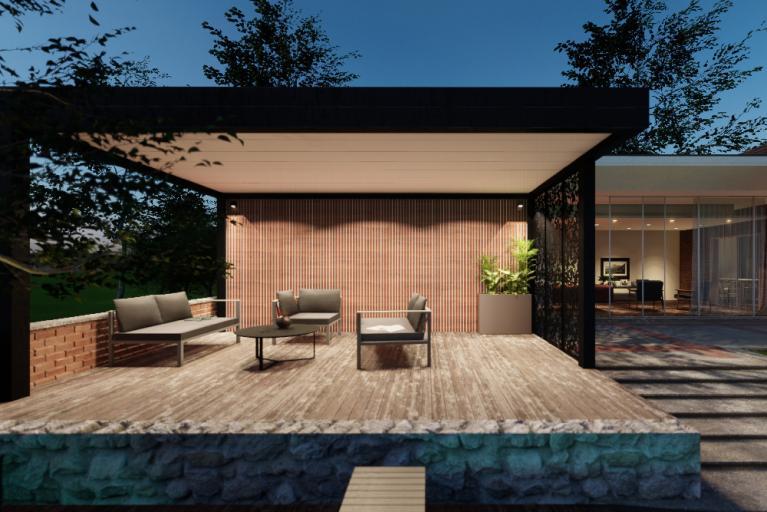
-
Which materials to use?
-
Sometimes it's just a technical room, but often the pool house is designed as a small house opening onto the outside world. A wide range of materials and construction techniques can therefore be used:
- Wood: most pool houses are made of wood (especially kit models). Offering good value for money, this timeless material also adds a touch of charm to the pool enclosure. However, it requires regular maintenance (fungicide treatment, woodstain, etc.) to resist the elements (damp, pests, fungus, etc.);
- composite: a cross between wood and plastic, this material offers the advantage of being easier to maintain. Once treated, composite retains the appearance of wood for many years, and can be stained in a wide range of colours. However, the aesthetic result may lack authenticity;
- masonry: the pool house can be built using traditional techniques, in brick or breeze-block. Solid and durable, a masonry pool house nevertheless takes longer to build. The price of a pool house can also quickly soar;
- steel or aluminium: strong and durable, these materials are ideal for building the structure of a pool enclosure. They require no special maintenance. And for a contemporary, designer look, you can also opt for an all-glass pool house: like a gazebo or conservatory, this model adds a touch of elegance and originality to the house, with a large space that opens out onto the garden.
-
What are the advantages of aluminium over wood for a pool house?
-
When it comes to choosing the material for your pool house, aluminium stands out as a superior option to wood for several reasons. Firstly, its durability offers a long-lasting solution for your outdoor space. Unlike wood, which is prone to rotting and warping in the elements, aluminium is resistant to corrosion. This means fewer maintenance worries and a structure that lasts over time, preserving the aesthetics and functionality of your pool house for many years to come.
In addition to its durability, aluminium offers a modern, customisable look for your pool house. Unlike wood, which requires frequent treatment to maintain its appearance, aluminium retains its beauty effortlessly. All you need for maintenance is a damp cloth and a little soap. What's more, its weather resistance ensures that your pool house retains its good looks whatever the weather. By choosing aluminium, you're opting for a material that offers both durability and aesthetics, ensuring long-term satisfaction from your investment in your outdoor space.
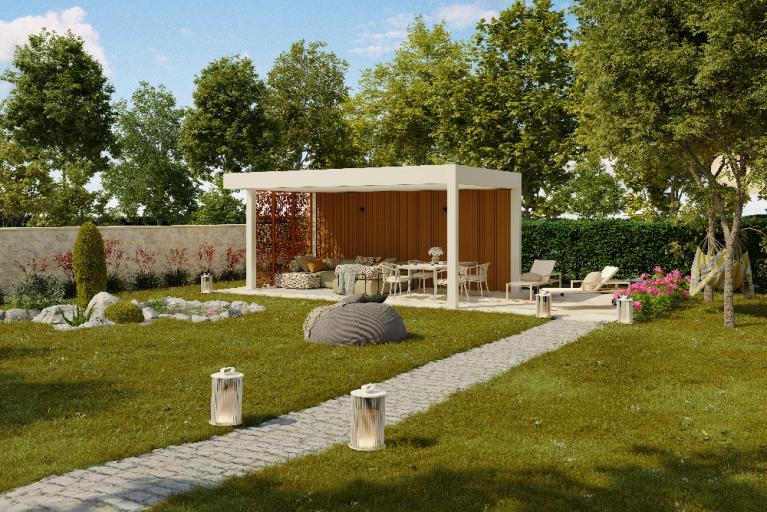
-
What are the options?
-
For a pool house that's perfectly suited to your pool, your needs and your budget, you can choose from a range of finishes and add a number of options:
- a flat roof, a pitched roof (a single slope) or a gable roof ;
- classic or XXL dimensions;
- glazed doors for a light, airy space, sliding panels to optimise space, windows for better ventilation, etc;
- an awning for shelter or protection from the sun, a terrace for even more comfort by the pool;
- LED ceiling lighting, an integrated sound system...
Commitment to quality
The Akena house magazine
You have a project?
Would you like a personalised 3D study and a free quotation? Contact us by clicking below.
AKENA is...
Over 40 years of experience
Founded in 1981 by one man, we now have more than 500 employees dedicated to making your project a success.
Made in France
A historic site and two factories covering more than 25,000 m² in Dompierre-sur-Yon in the Vendée region (85)
Innovative and tailor-made products
At AKENA, we are brimming with new ideas to improve and enhance our products.
The European leader in conservatories, pergolas...
But not only! AKENA also offers a complete range of carports and pool houses.
